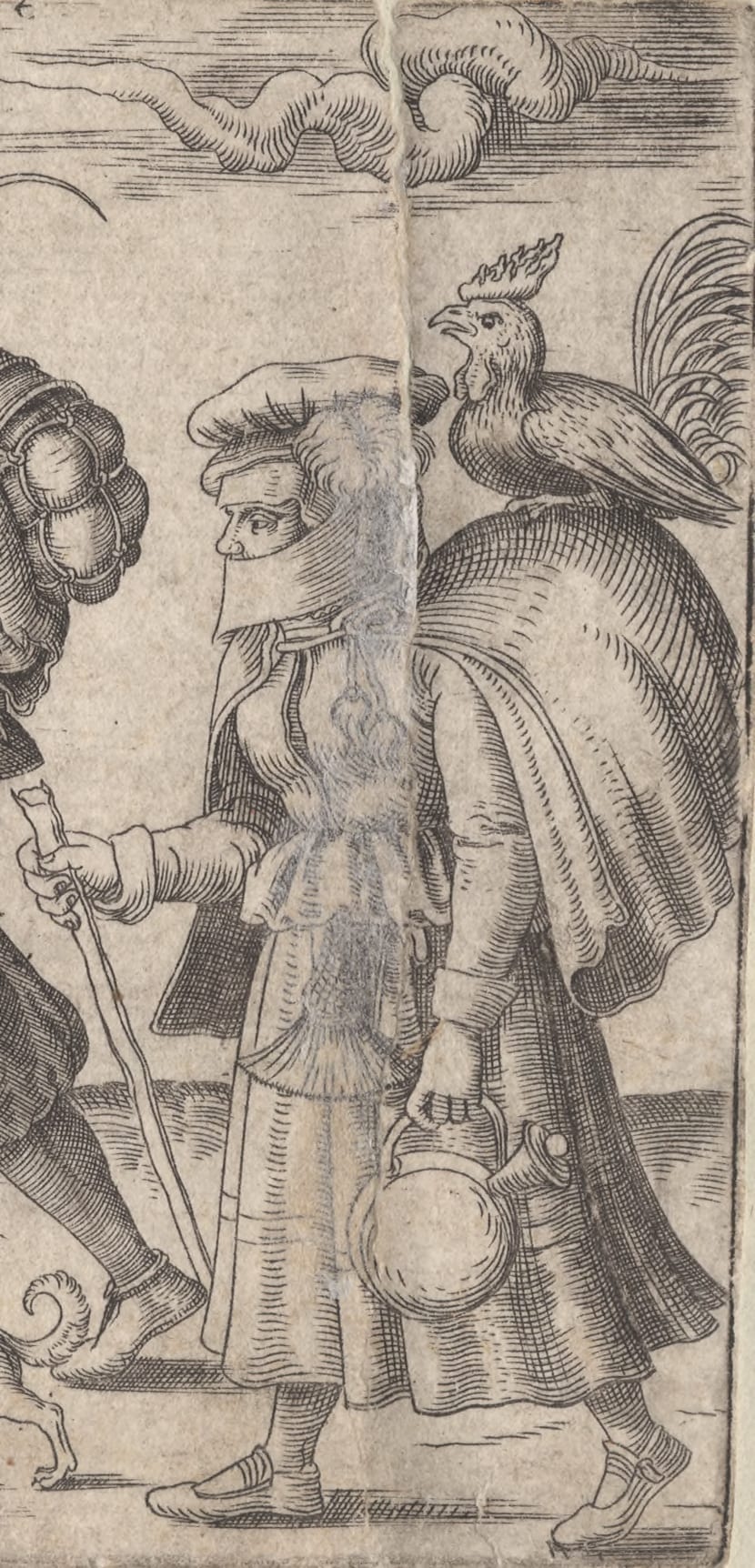
When the bubonic plague struck Europe after 1347, it left the medical profession helpless. Unable to cure or contain the disease, doctors focused largely on dealing with the buboes. They bled their patients and applied cups to prevent the dissemination of the poisonous contents, often choosing sites near to where the buboes were situated. They also used local remedies, some of animal origin and quite loathsome, either before or after the bubo was opened. One of their popular treatments was to apply the anus of a live chicken to the bubo, a bizarre approach that was recently reviewed by Erik Heinrichs in the Bulletin of the History of Medicine.
The dissertation begins with a reminder that doctors have always had a tendency to rush into trying treatments that sound good in theory but are later found to be worthless. This perhaps was more excusable at a time when effective remedies were virtually nonexistent, but even then why use such an outlandish therapy?
One explanation for this could be found in an ancient belief that chicken had special healing properties. After all, chicken soup has long been a favorite remedy with generations of grandmothers. Could chickens in their nature have a particular antidotal property? Do they not survive on a seemingly harmful diet of insects, worms, weeds, kitchen waste, and objects of putrefaction? Something about chickens must have induced doctors to use them as far back as antiquity. Avicenna, whose Canon of Medicine was one of the standard texts of medieval therapeutics, recommended chicken broth to “temper the humors” but also sanctioned the use of live chickens to cure poisonous bites.
Paracelsus and many other medical authorities of the time likewise recommended chicken-based therapies. Domesticated chickens were widely available in the largely rural medieval society, not expensive, and offered the choice of many different regimens, depending on how many birds were to be applied (in one case as many as seven per hour) and how long each application should last (at least as long as it took to recite three Lord’s prayers). Some doctors advised preliminary scarification, cauterization, cupping, sprinkling salt on the bubo, or applying plasters, all in an effort to prevent the poison from reaching the heart. To suck out this poison more effectively, some doctors recommended making the chicken breathe more deeply by forcing its beak shut or constricting its neck. Some even thought that this would make the birds breathe through their anus, in defiance of all known laws of physiology.
In another therapeutic variant but with the same aim in mind, killed chickens were tied to the bubo in order to absorb its poison. The chicken treatment would also have been a practical way of bringing heat to the lesion, rather like warm dressings and compresses or hot water bottles. Chickens would have been particularly suitable because their body temperature ranges from 41 to 45°C compared to 37° for humans.
But doctors always disagree, and other alternatives were also considered. Thus Paracelsus seems to have preferred treating the swellings with dried toad. Some learned physicians favored using an impaled toad from which all poison had been removed by soaking it overnight in vinegar. Others advised frogs, toads, snails, ducks, or even the flesh of dead fish, ducks, wolves, or cats. Some of these treatments had the advantage of being less expensive. Also used were the lungs of a cow, of a sheep, or pieces of brain in an attempt to strengthen it to destroy the material causing the inflammation.
Faced with no effective remedies in these horrendous times, doctors were willing to try anything in their efforts to minister to their frightened, credulous patients. They lived many centuries before diseases were shown to be caused by microorganisms, even more so before antibiotics became available. Their recommendations, as always reflecting the ever-changing tempestuous winds of medical fashion, were mostly not evidence-based and more like many of the treatments currently being advertised on television.
Further reading
Erik A. Heinrichs. The live chicken treatment for buboes: trying a plague cure in medieval and early modern Europe. Bull. Hist. Med 2017; 91:210.

Leave a Reply